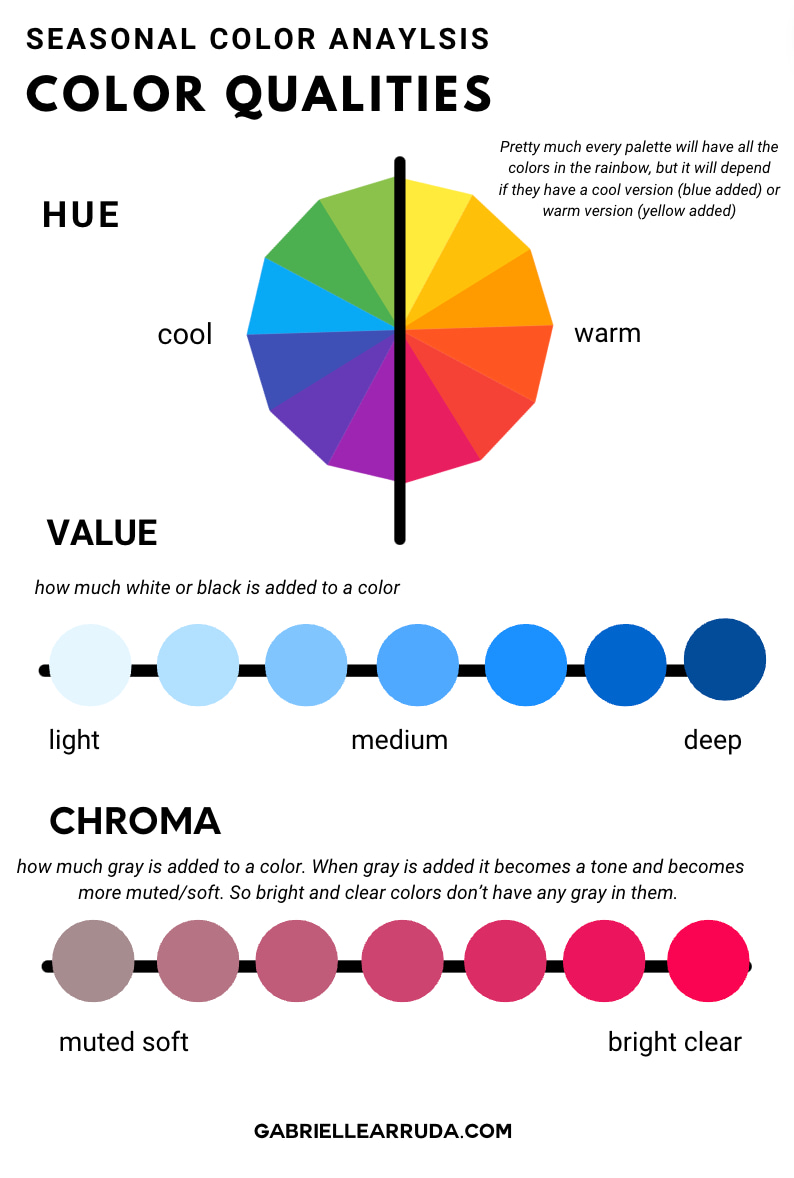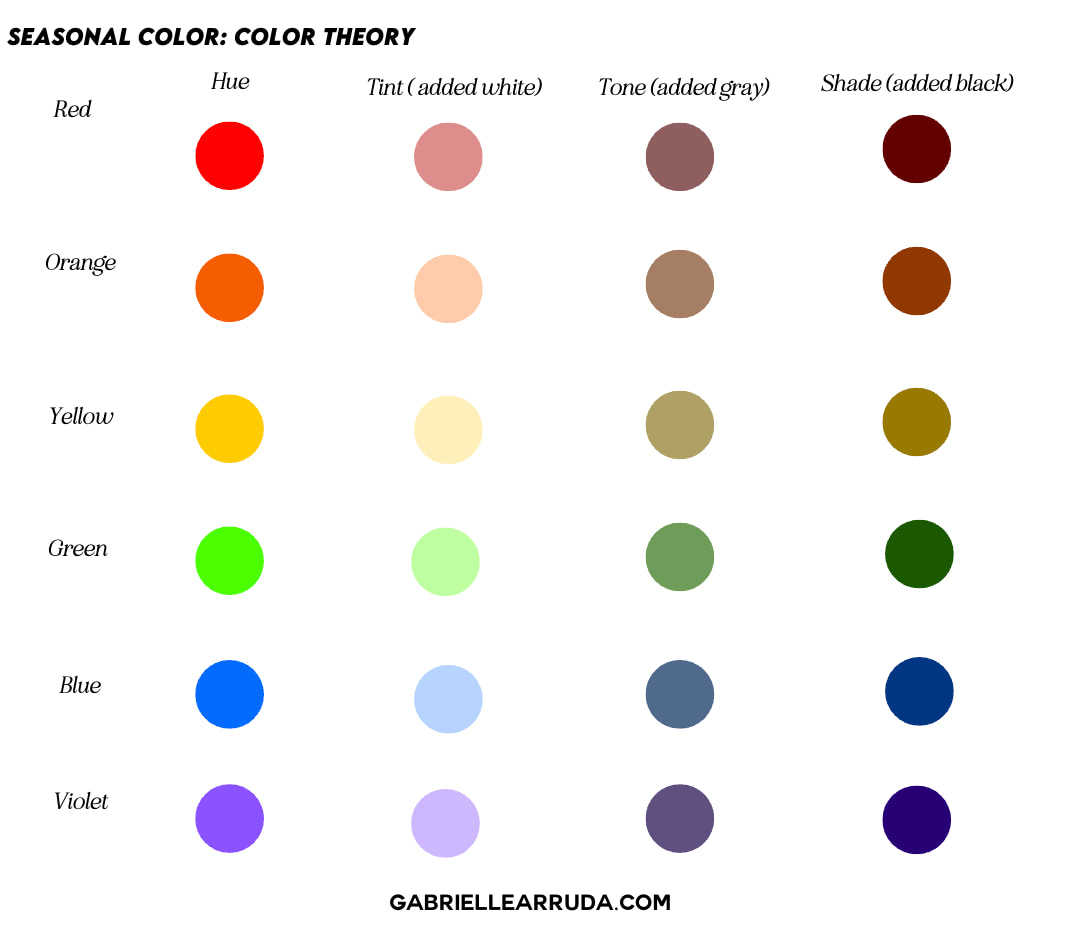
Hue: Hue is defined as being warm or cool. This means that the undertone of your skin either harmonizes with warm colors or with cool colors. Now, 75% of the world’s population is neutral/warm or neutral/cool. So things can get tricky, and this is why draping fabric (which we will get into) is the only surefire way to determine your undertone or hue. When a hue is warm it has yellow added to it. When it is cool it has blue added.
Value: How light or dark a color is (or how much white or black is added). When white is added to a color it creates tints. And when black is added it creates shades.
Chroma: Chroma measures how muted or bright a color is. If you think about a pure pigment that is straight from a bottle it has a high chroma. When you add gray to a color it softens it and creates a tone. Autumns and Summers are muted, whereas Winters and Springs are bright.

These three color dimensions are naturally found in coloring, with color analysis we are aiming to find where they fall and match those dimensions in the colors we wear.
Seasonal color theory is based on Munsell Color. And the below chart may help you understand how these three dimensions work together. If you change one part of the color (hue, value, or chroma) all the dimensions shift.
Determing Your Seasonal Color: The Options
Determing your seasonal palette is very tricky to do on your own. If you’re committed to DIY-ing it, I suggest you learn as much as you possibly can from trusted sources and begin exploring different palettes. This will also mean that you really need to understand color theory.
The MOST reliable way to find your seasonal color palette is to do color draping. This is examining how your skin reacts to color.
